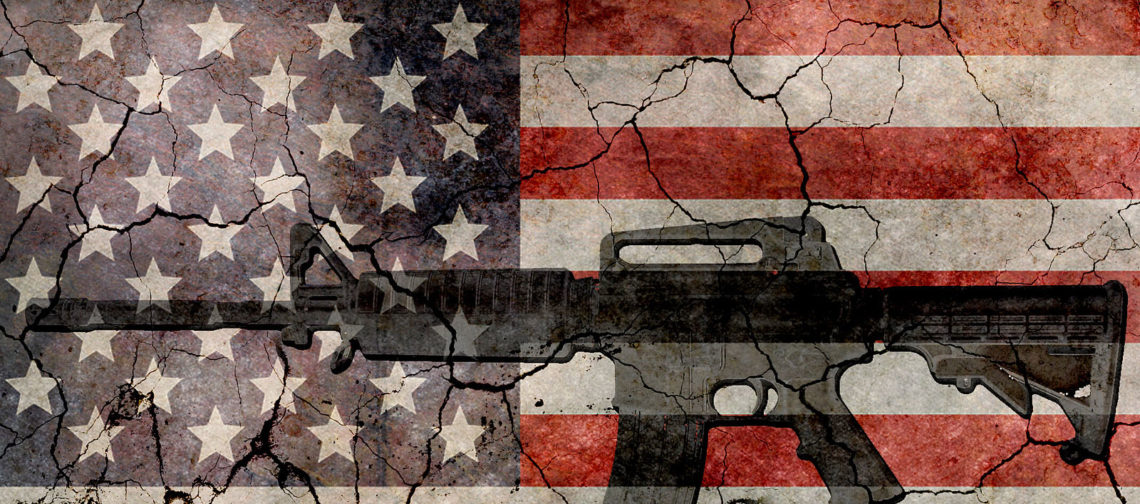Now is not the time?
Once again after another mass shooting in America, politicians respond with “now is not the time to talk about gun control.”
Politicians have given the same response after nearly every mass shooting in the U.S. since the Columbine High School shooting.
If now is not the time to talk about gun control in America, when is the time?
The Congressional Research Service found that from 2007 to 2013, there have been seven mass public shootings in which 10 or more people were killed.
Seven of ten of the deadliest mass shootings in modern U.S. history have occurred in the past decade, and three of the deadliest mass shootings have occurred in the past five months. Why is now not the time?
There have been at least 239 school shootings since the Sandy Hook shooting in 2012. These shootings have killed or injured more than 438 people.
Sandy Hook remains the deadliest elementary school shooting in modern U.S. history and the fourth deadliest shooting ever. Five years later, there still has been very little substantive discussion about gun control.
The terrible numbers that grow with each mass shooting are alarming. The number of mass shootings is increasing. The diversity of places where shootings are occurring in the U.S. is increasing—in 2017 Florida residents rated Parkland, FL the “safest” place in Florida to live. The number of weapons people are stockpiling is increasing.
Too many people—young and old—are dying from gun violence and we still refuse to talk about gun control. We’ll talk about mental health but we won’t talk about gun control.
Following the Las Vegas mass shooting—the deadliest U.S. mass shooting yet—President Donald Trump said that he would be talking about gun control “within a very short period of time.” No such discussion has taken place. Instead, all the discussions have been about mental illness.
After the Parkland, FL school shooting, Trump once again placed the blame on mental illness. While Trump often blames mass shootings on mental health, in February 2017, Trump signed legislation cutting an Obama-era regulation that added to the national gun background check database the names of people who are receiving Social Security checks for mental illnesses. The regulation would have prevented an estimated 75,000 people with mental disorders from being able to purchase a firearm.
While we need to discuss how to better serve people with mental illnesses–especially young people–mental illness is not a uniquely American problem. There are mentally ill people around the world. Gun violence and repeated mass shootings, however, are American problems.
Despite the fact that mental illness is often invoked as the reason for so many mass shootings in the U.S., mental illness is not the reason.
A study in the American Journal of Public Health found that databases that track gun homicides show that people with a diagnosed mental illness committed less than 5 percent of 120,000 gun-related killings in the U.S. between 2001 and 2010.
Research suggests that the only variable that explains the high rate of mass shootings in America is the astronomical number of guns in America.
Contrary to popular perception, the significant number of guns in America is not because most Americans own guns. While the NRA and pro-gun advocates constantly repeat the rhetoric about the government taking guns away from Americans, nearly sixty percent of American households do not own a gun.
Because of the easy access to guns in the U.S., 3 percent of American adults are able to own half of the nation’s guns.
Practical common sense gun control policies that help restrict easy access to guns do not take away an Americans’ constitutional right to own a gun.
We as a nation have more policies controlling voting access (which is also a constitutional right) than we have controlling gun access.
Why should we as a nation make it easy for individuals to stockpile weapons? The right to own a gun is not a right to own an arsenal. Laws limiting multiple purchases of firearms are proven to significantly reduce the number of crime guns.
Furthermore, why should the right to own a gun include owning military assault weapons that are designed solely for the purpose of killing as many people as possible?
The most popular of these military assault weapons is the AR-15. The AR-15 is a lightweight, customizable version of the military’s M16. While once banned, the AR-15 soared in popularity after a federal ban on assault weapons expired in 2004.
Since the expiration of that ban, more than a dozen mass shootings have involved AR-15 style assault rifles–including a Las Vegas concert, an Orlando nightclub, an elementary school in Newtown, Conn, a Texas church, and now a high school in Parkland, Fla.
Six of the 10 deadliest mass shootings in the U.S. over the past decade have used AR-15-style semi-automatic rifles. In the 14 years since the expiration of the ban, people have used AR-15 style assault weapons to murder more than 221 people and to injure more than 600 people.
Another common sense gun control policy includes a ban on a device called a “bump stock.” A bump stock, which holds up to 100 rounds of ammunition, allows a semi-automatic rifle to fire at a rate of speed similar to an automatic rifle. The gunman who killed 58 people in Las Vegas on Oct. 1, 2017, used a bump stock.
Congressional lawmakers called for more regulation of bump stocks and even outright bans after the Las Vegas killings. Four months after the deadliest mass shooting in modern U.S. history, Congress still has not acted on bump stocks.
While Americans often feel a sense of helplessness when it comes to preventing mass shootings in America, it seems somewhat obvious that one way to address the problem of gun violence is to talk about and implement common sense gun control policies.
If we really care about protecting lives, we need to talk about everything that might help protect lives—including gun control.
There is no one answer to addressing gun violence in America. The solution isn’t simply addressing mental health. The solution isn’t simply addressing gun control. The solution has to be comprehensive, and now is the time to talk about all the components of such a comprehensive solution.
While many politicians keep saying, “now is not the time to talk about gun control,” I hope the outrage of high school students from Marjory Stoneman Douglas High School in Parkland, FL (and from elsewhere around the country) will force America to realize that now is the time to talk about (and implement) common sense gun control policies in America.





Leave a Comment